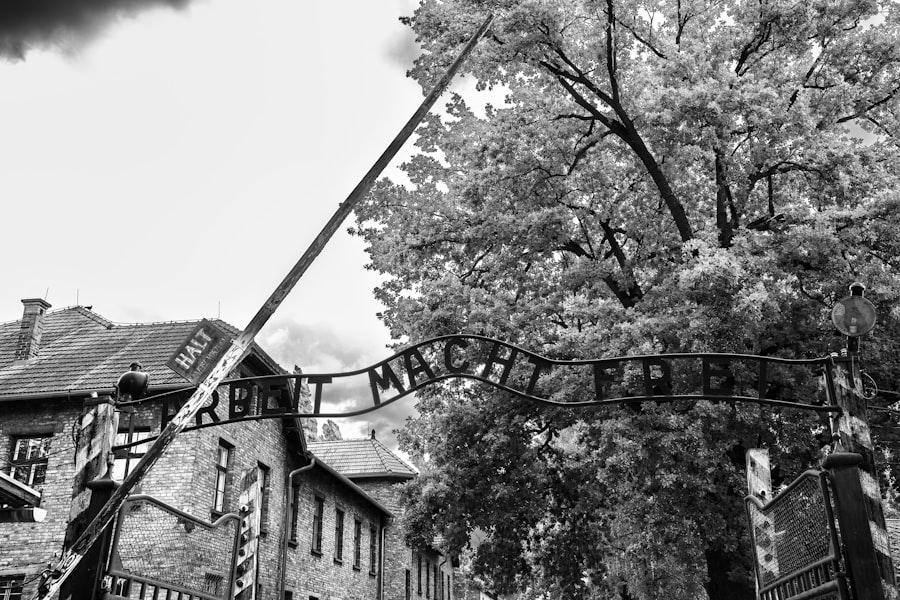In the early years of World War II, the United States found itself embroiled in a conflict that extended far beyond its borders. As the war escalated, the threat of espionage and sabotage loomed large, particularly from the Axis powers. Among these threats were the Nazi saboteurs, who were dispatched to American soil with the intent of undermining the war effort from within.
In 1942, a clandestine operation was set in motion by the German government, aiming to disrupt American industry and infrastructure through covert acts of sabotage. This initiative was not merely a military strategy; it was a psychological warfare tactic designed to instill fear and uncertainty among the American populace. The presence of Nazi saboteurs in America represented a significant challenge to national security.
The very idea that enemy agents could infiltrate the homeland was alarming, prompting widespread concern among government officials and citizens alike. The saboteurs were tasked with targeting key industries, transportation networks, and military installations, all of which were vital to the American war effort.
Key Takeaways
- Nazi saboteurs were sent to America in 1942 with the goal of disrupting American operations and causing chaos.
- The recruitment and training of Nazi saboteurs was carefully planned and executed, with the agents receiving extensive training in sabotage and espionage.
- The landing of Nazi saboteurs on American soil was a bold and dangerous operation, with the agents facing numerous challenges and risks.
- The capture and trial of Nazi saboteurs was a significant victory for American security, leading to the execution of several agents and the dismantling of the sabotage operation.
- The impact of Nazi saboteurs on American security was significant, leading to increased vigilance and the hunt for additional Nazi agents in the United States.
The Plan to Infiltrate and Disrupt American Operations
The plan devised by Nazi Germany was both ambitious and audacious. It involved sending trained operatives into the United States with specific objectives aimed at crippling American production capabilities. The overarching goal was to create chaos and confusion, thereby weakening the resolve of the American people and their government.
The Nazis believed that by targeting critical infrastructure, they could significantly hinder the United States’ ability to support its military endeavors abroad. To execute this plan effectively, the Nazis identified several key industries that were essential to the war effort. These included factories producing munitions, shipyards constructing naval vessels, and transportation hubs facilitating the movement of troops and supplies.
By disrupting these operations, the saboteurs aimed to create a ripple effect that would resonate throughout the American economy. The strategy was predicated on the belief that if Americans felt vulnerable at home, their morale would wane, ultimately affecting their support for the war.
The Recruitment and Training of Nazi Saboteurs

The recruitment of Nazi saboteurs was a meticulous process that involved selecting individuals with specific skills and backgrounds. The German government sought out those who had lived in America or were familiar with American culture, as this knowledge would be invaluable for blending in and executing their missions. Many of these recruits were German nationals or individuals sympathetic to the Nazi cause, who were willing to risk their lives for what they believed was a greater purpose.
Once selected, these recruits underwent rigorous training designed to prepare them for their covert operations. This training included instruction in sabotage techniques, evasion tactics, and even basic survival skills. The operatives were taught how to use explosives and incendiary devices effectively, ensuring that they could carry out their missions with precision.
Additionally, they received guidance on how to navigate American society without drawing attention to themselves, which was crucial for their success in blending into everyday life.
The Landing of Nazi Saboteurs on American Soil
| Location | Date | Number of Saboteurs | Objective |
|---|---|---|---|
| Long Island, New York | June 13, 1942 | 8 | Destroying key US infrastructure |
| Ponte Vedra Beach, Florida | June 17, 1942 | 4 | Disrupting US war production |
In June 1942, the first group of Nazi saboteurs made their way to American shores. They arrived via submarine along the East Coast, specifically targeting locations that would allow them to disperse quickly into the surrounding areas. Their landing was shrouded in secrecy, but it marked the beginning of a dangerous chapter in American history.
The operatives were equipped with explosives and other materials necessary for their planned acts of sabotage. Upon reaching land, the saboteurs faced immediate challenges as they attempted to establish themselves in a foreign environment. They had to navigate not only the physical landscape but also the social dynamics of American life.
Their initial attempts at sabotage included targeting factories and railroads, but they quickly realized that executing their plans would require careful planning and coordination. Despite their training, the complexities of operating in an unfamiliar country posed significant risks.
The Capture and Trial of Nazi Saboteurs
The fate of the Nazi saboteurs took a dramatic turn when they were apprehended by American authorities. A combination of luck and vigilance led to their capture shortly after they began executing their plans. One group was betrayed by a member who had second thoughts about their mission, while another was intercepted by law enforcement before they could carry out any significant acts of sabotage.
The swift response from American intelligence agencies underscored the importance of vigilance during wartime. Following their capture, the saboteurs faced a highly publicized trial that captivated the nation. The proceedings were marked by intense scrutiny as Americans grappled with the implications of having enemy agents within their borders.
The trials raised questions about national security, civil liberties, and the appropriate response to acts of war conducted on domestic soil. Ultimately, the court found the saboteurs guilty, leading to severe penalties that included execution for some members of the group.
The Impact of Nazi Saboteurs on American Security

The presence of Nazi saboteurs in America had far-reaching implications for national security policies. Their infiltration highlighted vulnerabilities within American defenses and prompted a reevaluation of existing security measures. In response to this threat, government agencies intensified efforts to monitor potential espionage activities and improve intelligence-gathering capabilities.
The events surrounding the saboteurs served as a wake-up call for many Americans regarding the realities of war on home soil. Moreover, the fear generated by these incidents led to increased public awareness about national security issues. Citizens became more vigilant in reporting suspicious activities and individuals within their communities.
This heightened sense of awareness contributed to a culture of vigilance that persisted throughout the war years. The government capitalized on this sentiment by launching campaigns encouraging citizens to remain alert and report any potential threats.
The Legacy of the Nazi Saboteurs in America
The legacy of the Nazi saboteurs extends beyond their immediate actions during World War II; it serves as a reminder of the complexities inherent in wartime security. Their story is one of intrigue and danger but also one that underscores the resilience of a nation facing unprecedented challenges. The events surrounding their infiltration into America prompted significant changes in how national security was approached in subsequent years.
In addition to influencing policy changes, the saga of the Nazi saboteurs has been immortalized in various forms of media, including books, films, and documentaries.
By examining this chapter in history, contemporary audiences can gain insights into how societies respond to threats from within and how such experiences shape national identity.
The Hunt for Additional Nazi Agents in the United States
Following the capture of the initial group of saboteurs, American authorities launched an extensive investigation aimed at uncovering any additional Nazi agents operating within its borders. This hunt involved collaboration between various intelligence agencies and law enforcement organizations as they sought to identify potential threats before they could materialize into acts of sabotage or espionage. The urgency of this mission reflected both a desire for justice and a commitment to safeguarding national security.
The search for additional agents proved challenging due to the clandestine nature of espionage activities. Authorities relied heavily on tips from vigilant citizens who reported suspicious behavior or unusual activities in their neighborhoods. This grassroots involvement played a crucial role in uncovering hidden networks and thwarting potential plots against American interests.
The Response of the American Government to the Nazi Saboteur Threat
In light of the threat posed by Nazi saboteurs, the American government implemented a series of measures designed to bolster national security and prevent future incidents. These measures included increased funding for intelligence operations, enhanced border security protocols, and more stringent immigration policies aimed at identifying potential threats before they could enter the country. Additionally, public awareness campaigns were launched to educate citizens about recognizing signs of espionage or sabotage.
These initiatives encouraged individuals to report any suspicious activities they encountered in their daily lives, fostering a sense of collective responsibility for national security. The government’s proactive approach reflected an understanding that safeguarding democracy required vigilance from both authorities and citizens alike.
The Role of the American Public in Identifying and Reporting Nazi Saboteurs
The involvement of ordinary Americans played a pivotal role in identifying and reporting potential Nazi saboteurs during World War
Community vigilance manifested itself through various channels—neighborhood watch groups emerged, local law enforcement received an influx of tips from concerned citizens, and public forums were held to discuss security measures. This grassroots engagement not only aided authorities in apprehending suspects but also fostered a sense of unity among Americans during a time when fear and uncertainty permeated society.
Lessons Learned from the Nazi Saboteur Threat in America 1942
The saga of Nazi saboteurs in America during 1942 serves as a poignant reminder of the complexities associated with national security in times of conflict. It highlights how external threats can manifest internally and underscores the importance of vigilance among both government agencies and citizens alike. The events surrounding these infiltrators prompted significant changes in policy and public awareness that continue to resonate today.
Ultimately, this chapter in history teaches valuable lessons about resilience, unity, and proactive engagement in safeguarding democracy against threats—both foreign and domestic. As contemporary societies navigate their own challenges related to security and espionage, reflecting on past experiences can provide crucial insights into fostering a secure environment while upholding democratic values.
In 1942, a group of Nazi saboteurs infiltrated the United States with the intent to disrupt the American war effort during World War II. This covert operation, known as Operation Pastorius, involved eight German agents who landed on American shores via submarines. Their mission was to destroy key economic targets, including factories, railroads, and bridges. However, the plan was foiled when two of the saboteurs defected and informed the FBI, leading to the capture and trial of the group. For a deeper exploration of this intriguing episode in history, you can read a related article on Nazi saboteurs in America by visiting In The War Room.
WATCH THIS! 😱The Nazi Trial America Never Wanted You To See 😱
FAQs
What were the Nazi saboteurs in America in 1942?
The Nazi saboteurs in America in 1942 were a group of German agents who were sent to the United States by Nazi Germany with the intention of conducting acts of sabotage on American soil during World War II.
How many Nazi saboteurs were involved in the operation?
There were a total of eight Nazi saboteurs involved in the operation, which was known as Operation Pastorius. They were divided into two separate teams, with each team consisting of four members.
What were the targets of the Nazi saboteurs in America?
The targets of the Nazi saboteurs in America included key infrastructure such as power plants, bridges, and factories, as well as transportation networks and other strategic locations.
What happened to the Nazi saboteurs in America?
The Nazi saboteurs were apprehended by the FBI shortly after their arrival in the United States. They were subsequently tried by a military tribunal and six of the eight saboteurs were executed, while the remaining two were sentenced to prison.
What impact did the Nazi saboteurs’ operation have on America?
The Nazi saboteurs’ operation had a significant impact on America, leading to increased security measures and heightened public awareness of the threat of enemy agents operating within the country. It also highlighted the importance of counterintelligence efforts during wartime.




